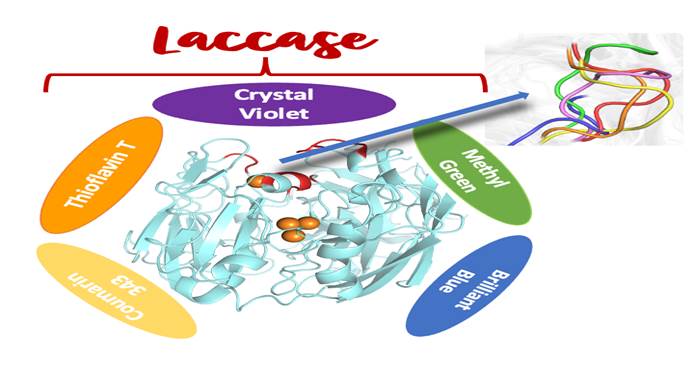- Six Reasons To Bring Millets To The Market!
- Hong Kong Court Makes Landmark Ruling Protecting Transgender Rights
- Substrate Promiscuity Of Fungi Generated Enzyme Laccase Shows Potential In Degrading Industrial Dye Effluents
- Union Minister Of Rural Development Holds A Meeting On ‘Cactus Plantation And Its Economic Usage’
- Ministry Of Tribal Affairs Organised One Day Mega Health Camp ‘Abua Bugin Hodmo-Our Better Health’ At Saraikela Kharsawan, Jharkhand
- Blue Flag Standards For Beaches In The Country
- India-Namibia Sign An MoU On Wildlife Conservation And Sustainable Biodiversity Utilization
- Hydrophobic Ingredients, In Combination With Obsolete Antibiotics, Can Counter Multidrug-Resistant Bacteria
- Promoting Cultivation Of Kala Namak Paddy
Substrate promiscuity of fungi generated enzyme Laccase shows potential in degrading industrial dye effluents
Posted by: 2023-03-20 15:21:00 ,By Admin

An enzyme called laccase generated by a group of fungi has been found capable of degrading a variety of hazardous organic dye molecules that are regularly drained into waterbodies after dying clothes in the textile industry. This observed characteristic which the scientists termed substrate promiscuity can have deep implication in designing enzyme-coated cassettes for treating heavily dye-polluted water through a natural solution to make the environment greener.
Laccase, was known for its capacity to degrade various organic molecules. Hence the scientists saw a scope in using it to develop a technology to treat/degrade the dye effluents emanated from textile industries.
A joint team of Prof. Ranjit Biswas and Dr. Suman Chakrabarty from S. N. Bose National Center for Basic Sciences (SNBNCBS), Kolkata, an autonomous institute of Department of Science and Technology (DST) tested the efficacy of laccase in degrading some standard dye molecules like Methyl Green, Crystal Violet, Thioflavin T, Coumarin 343, and Brilliant Blue.
Combining UV/Visible spectroscopy and computer simulations they demonstrated that many organic dye molecules with varying kinetics and wide variation in charge, size and shape can be degraded by the enzyme laccase. Laccase, generated by a group of fungi, contains 4 copper atoms in two different oxidation states, and degrades substrates through redox reactions, producing only water and simplest non-virulent or less virulent oxides of carbon, nitrogen and sulphur.
Using computational modeling and simulation the scientists have elucidated the molecular thermodynamic origin and mechanism behind this substrate promiscuity. Molecular docking and Molecular Dynamics (MD) simulation studies confirmed that the active site of laccase can accommodate a wide range of dye molecules with varying charge and shape due to conformational plasticity of a loop covering the active site. The shape of the binding pocket can change adaptively. Internal cancellation between different types of interactions leads to almost similar binding affinity for very different molecules. This substrate promiscuity of laccase offers an immense biotechnological potential for a broad-spectrum degrader for industrial dye effluents.
Read more: Click Here
You may like similar news

‘India ready to help restore peace’: PM Narendra Modi tells Vladimir Putin on Ukraine conflict
Prime Minister Narendra Modi on Tuesday reiterated a peaceful solution to the ongoing Russia-Ukraine...

Chhath Puja 2024: Is it on November 05 or 07? Know the correct date, time of the auspicious four-day Hindu festival
If you thought that the October air is filled with festive spirit, wait till we tell you that the ce...

Bharat Tex 2025 gains international momentum:
Ministry of Textiles organized an interactive Session with Foreign Missions in India for Bharat Tex ...

PRESIDENT OF INDIA PRESENTS NATIONAL WATER AWARDS
The President of India, Smt. Droupadi Murmu presented the fifth National Water Awards in New Delhi t...

TMC MP Kalyan Banerjee breaks glass bottle after heated exchange with BJP leader in Waqf Bill meeting
Trinamool Congress leader Kalyan Banerjee on Tuesday smashed a glass water bottle during a heated ex...









